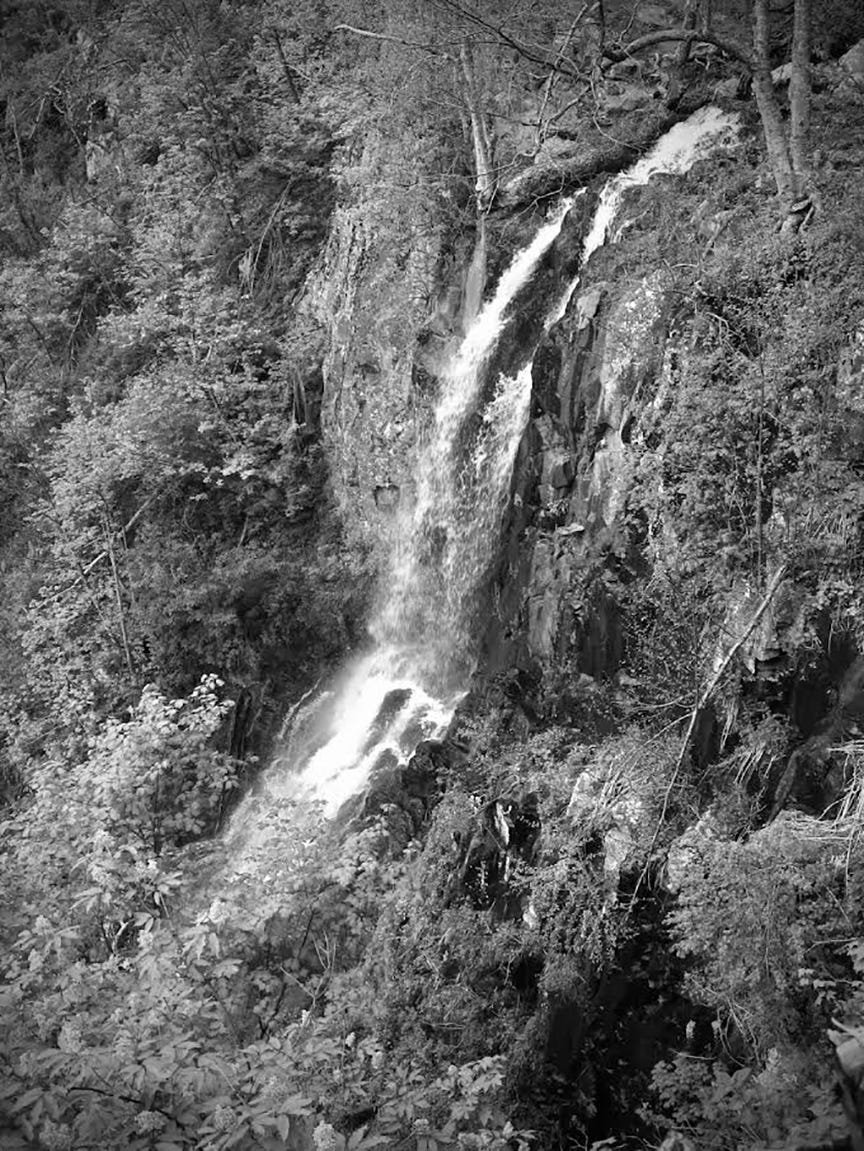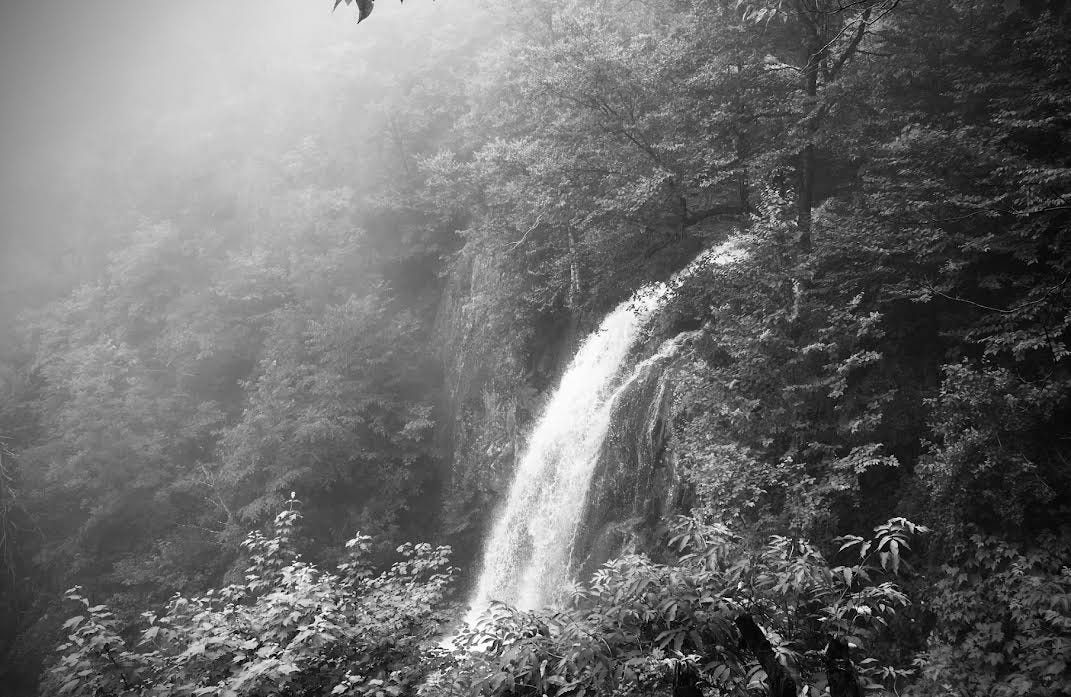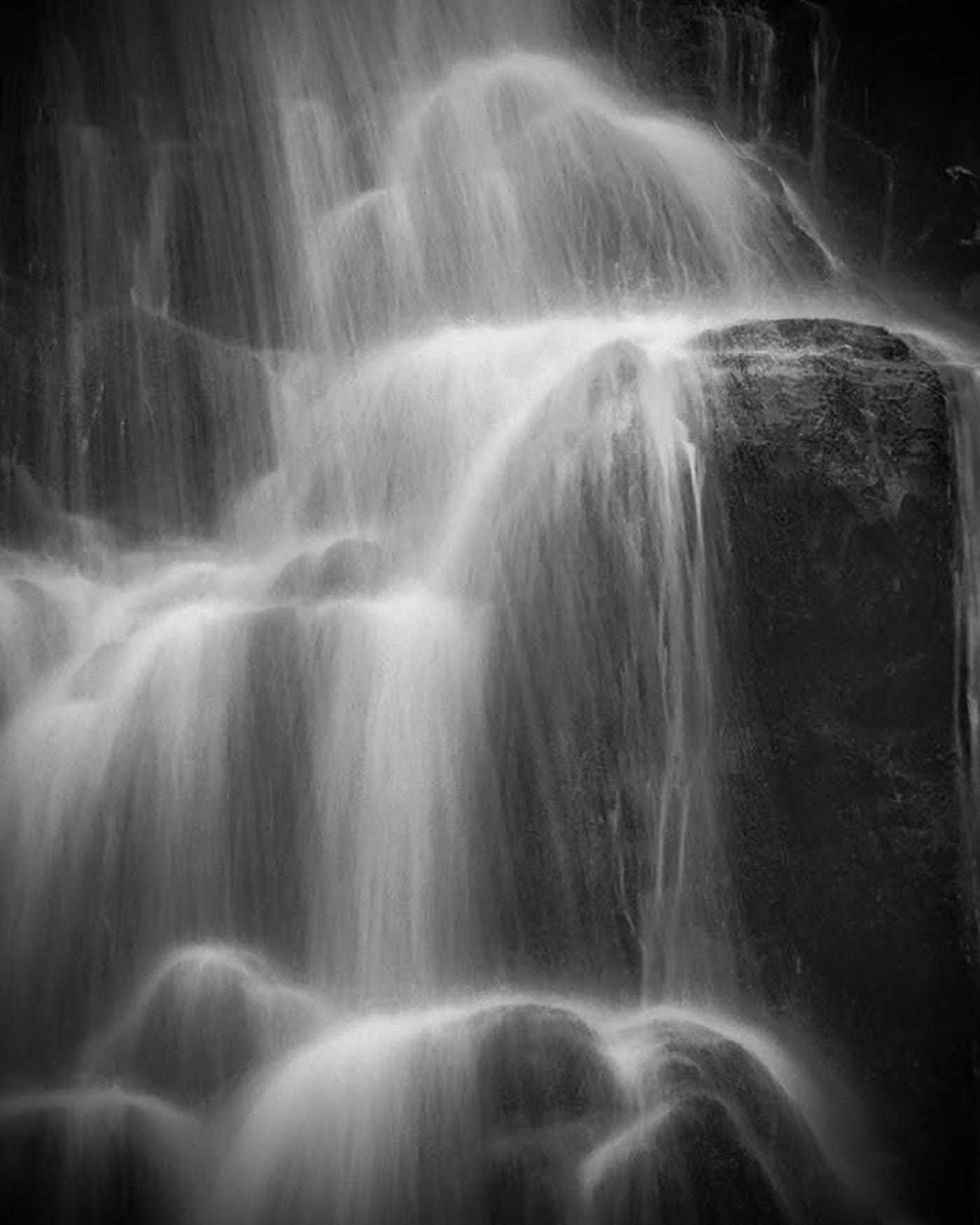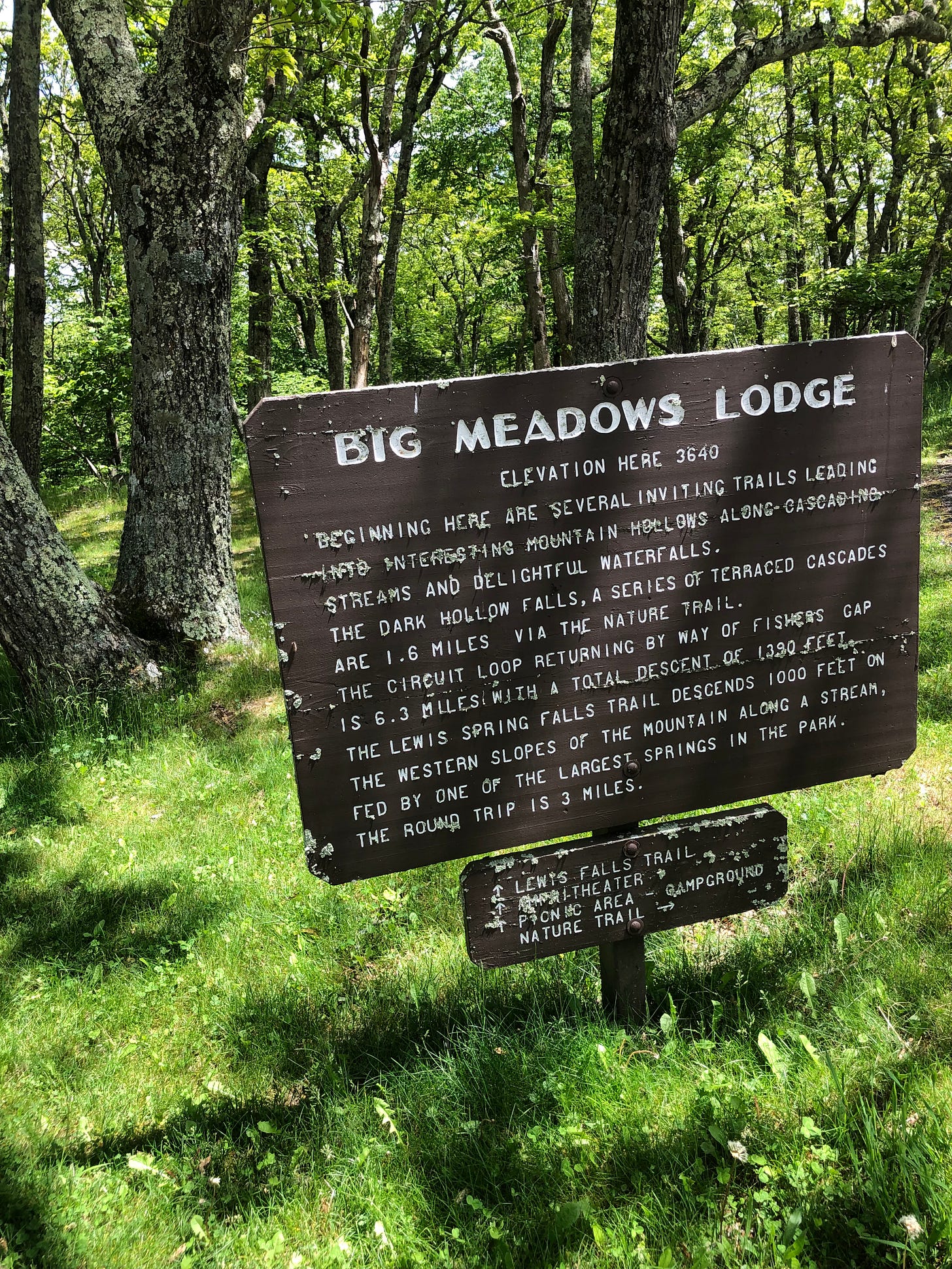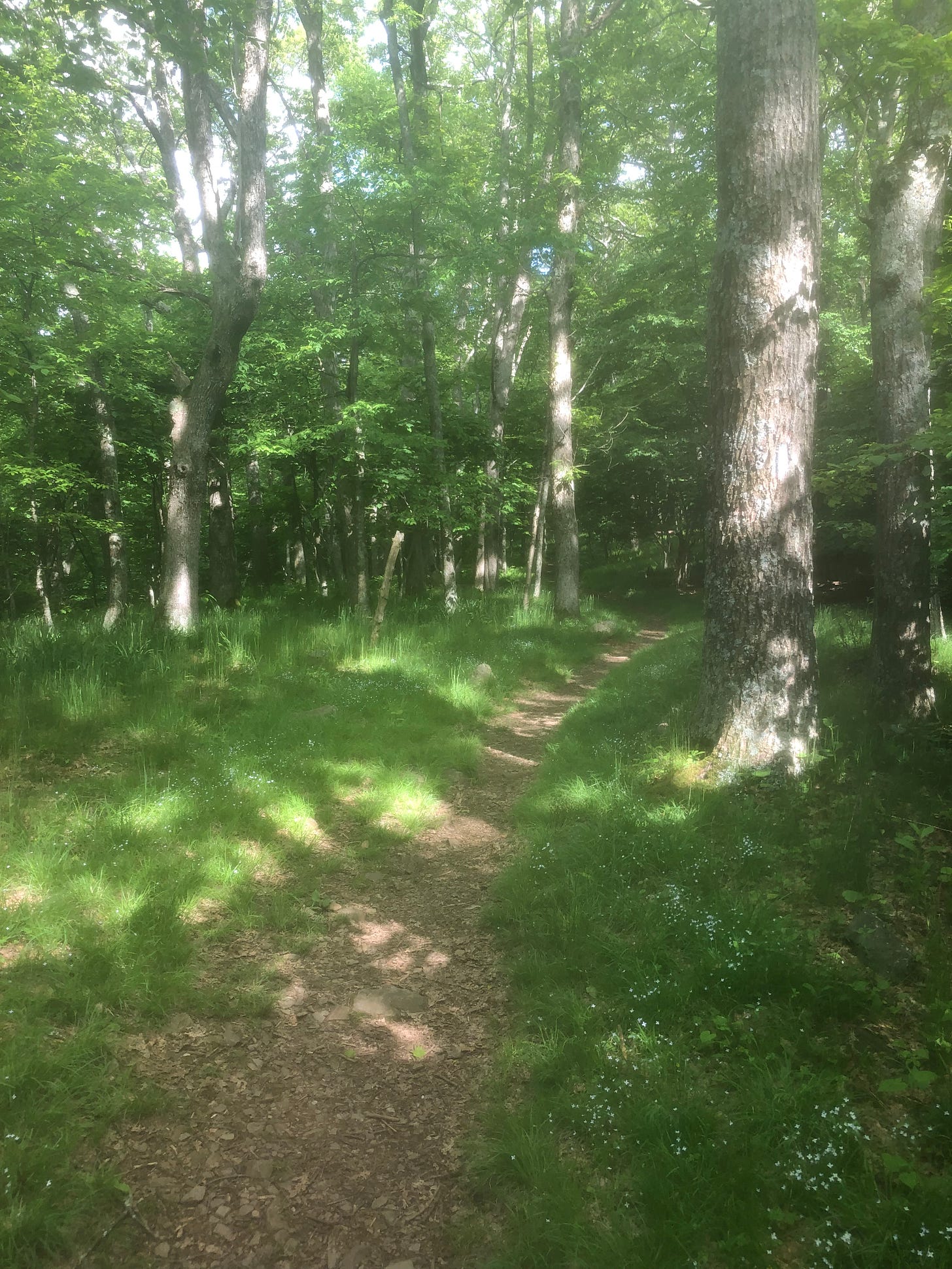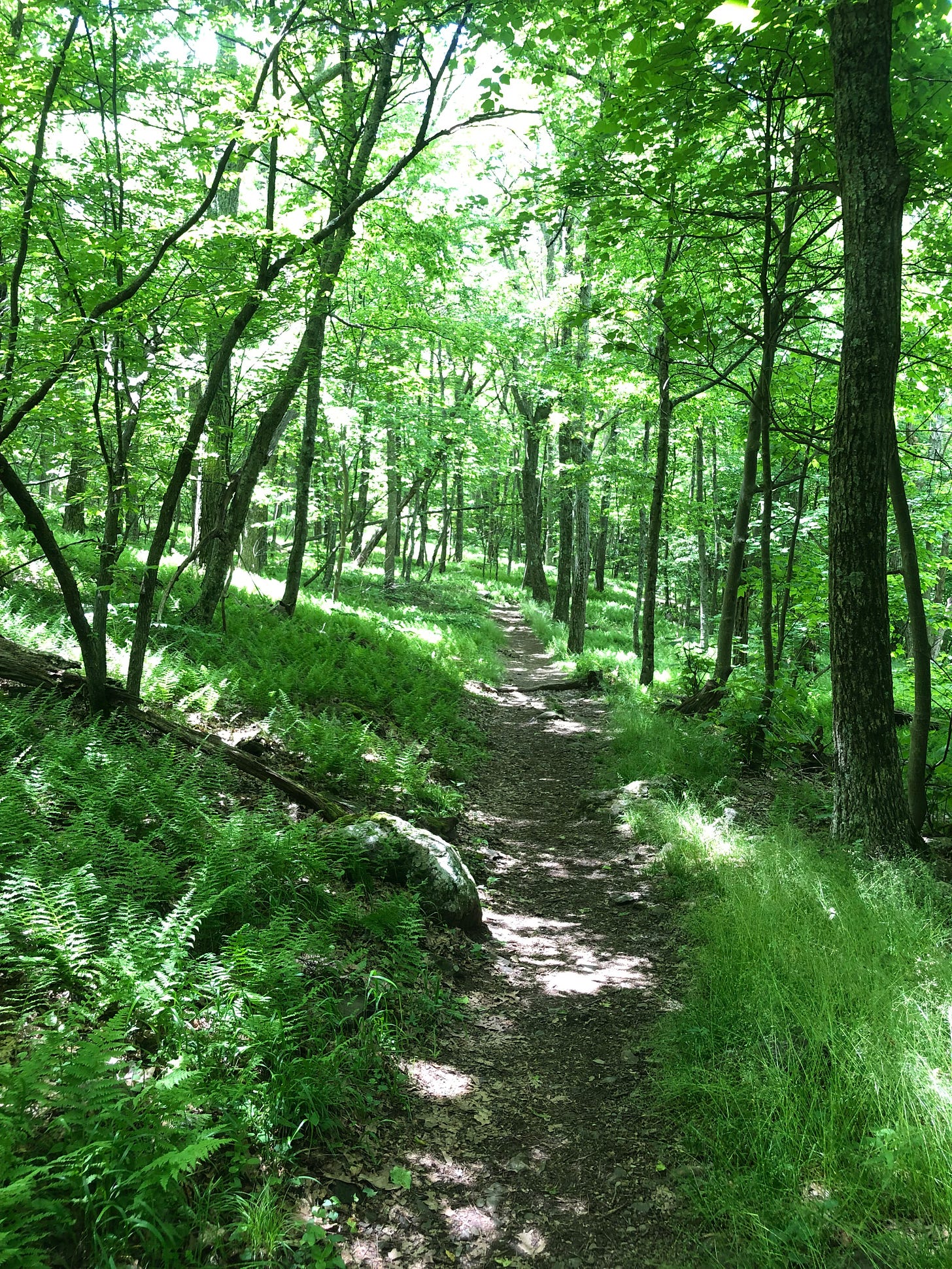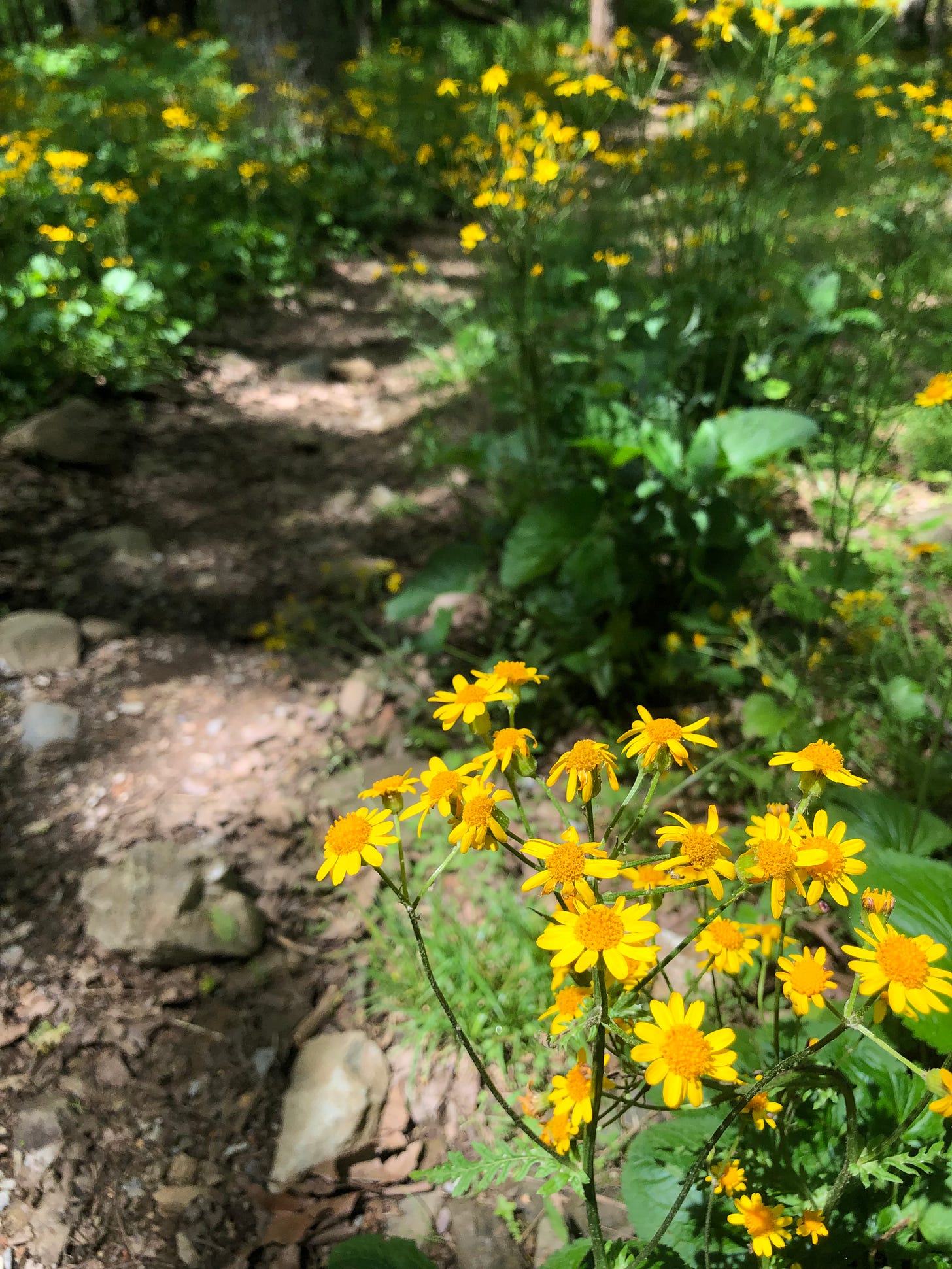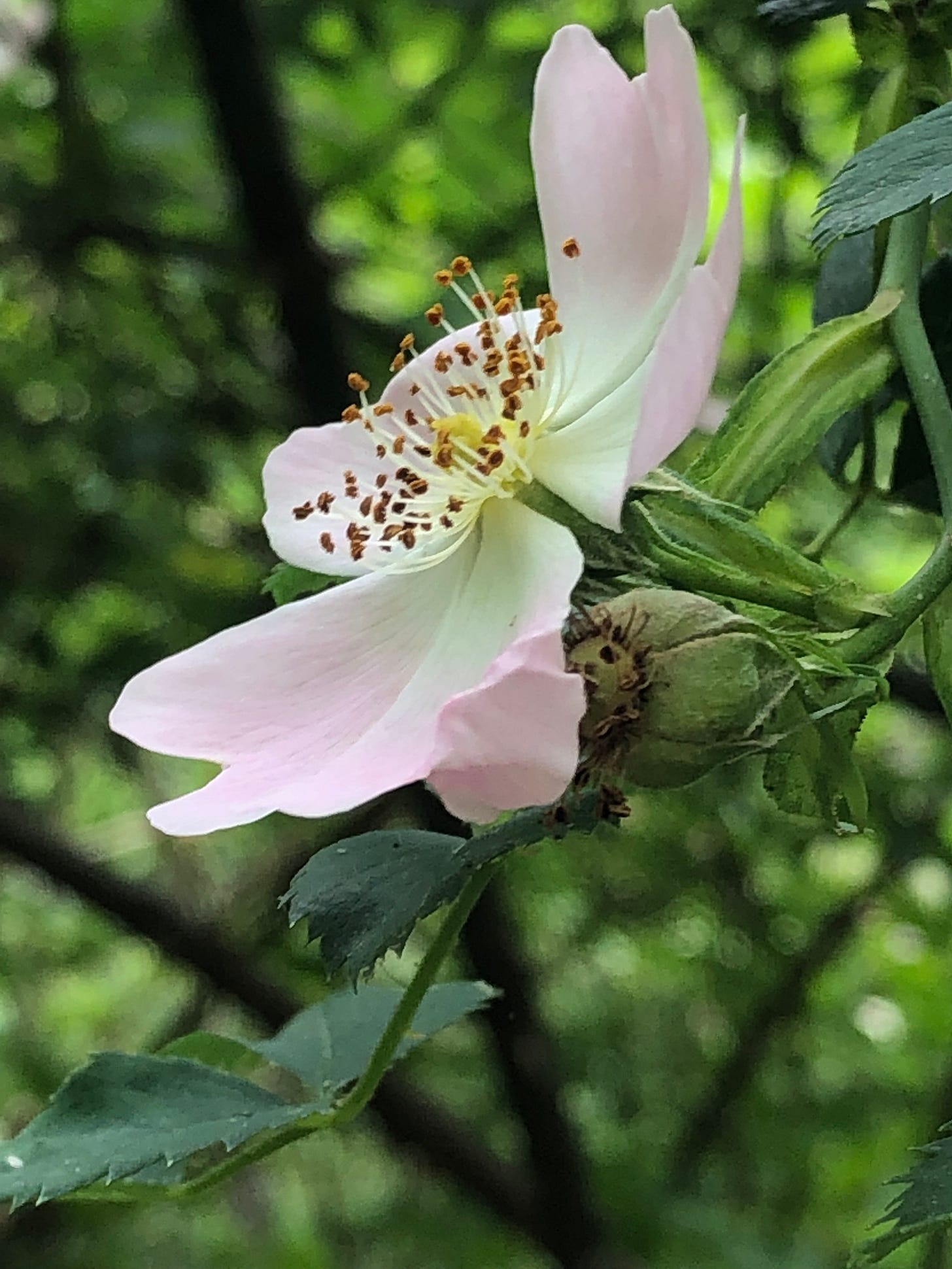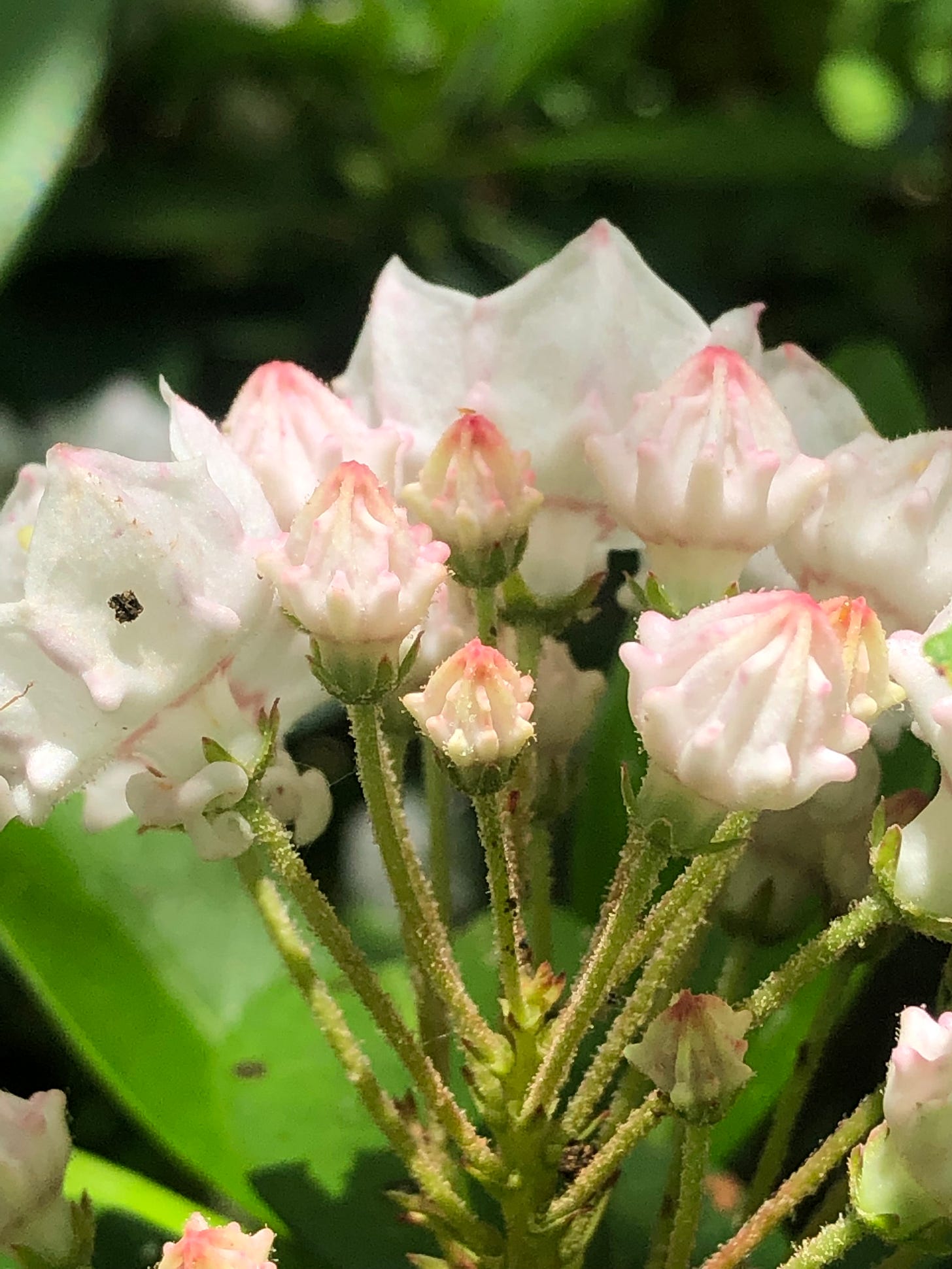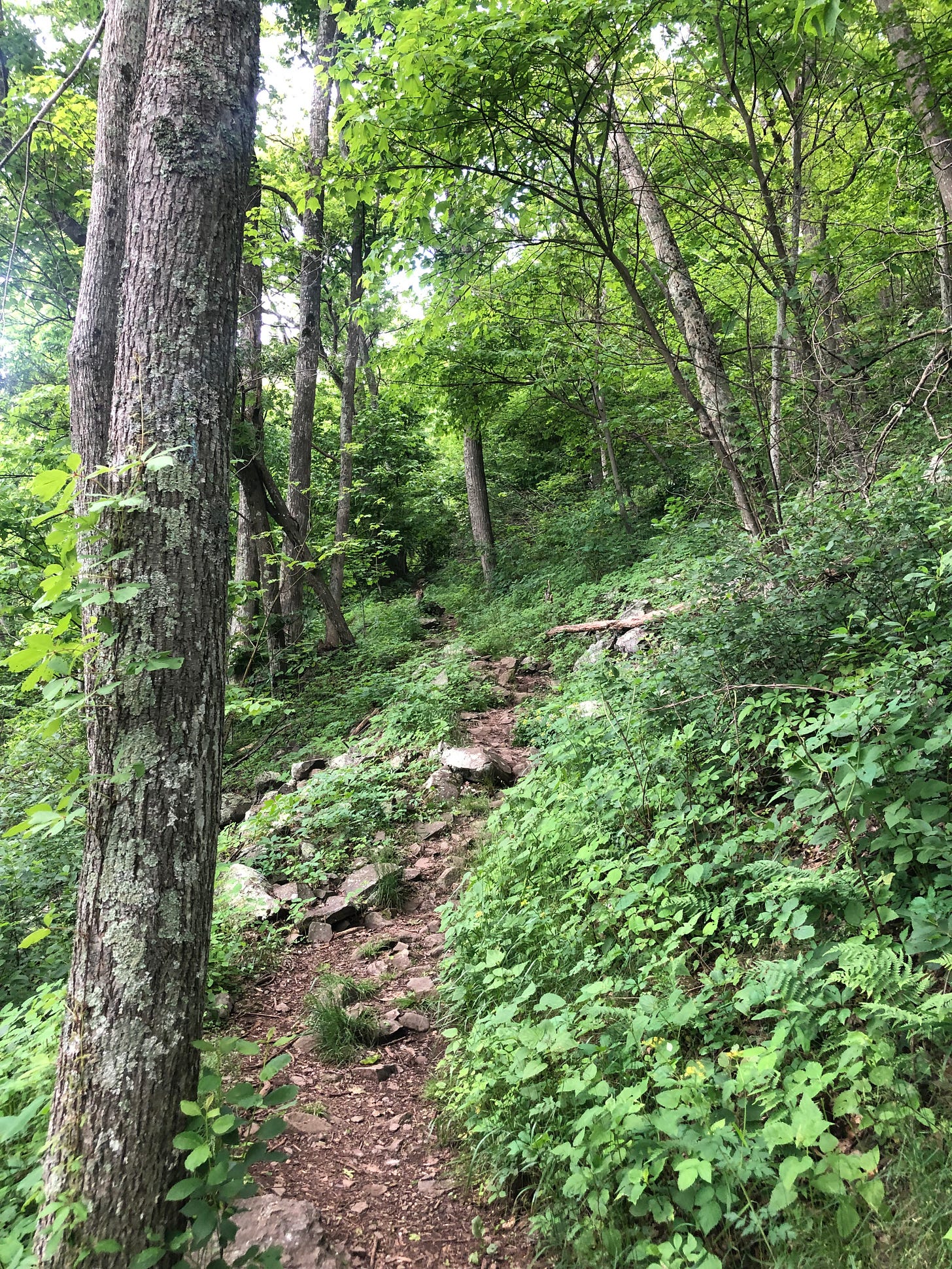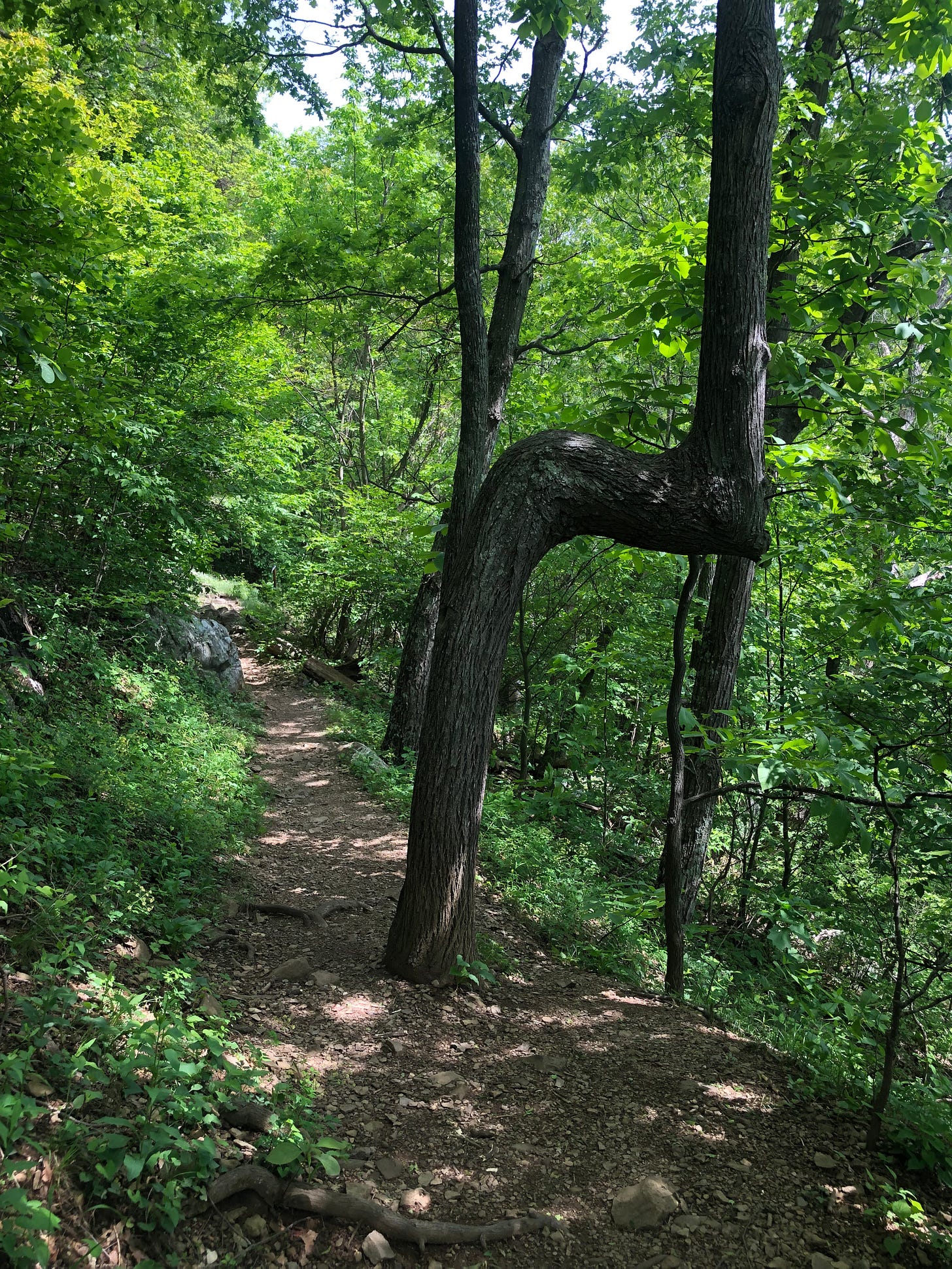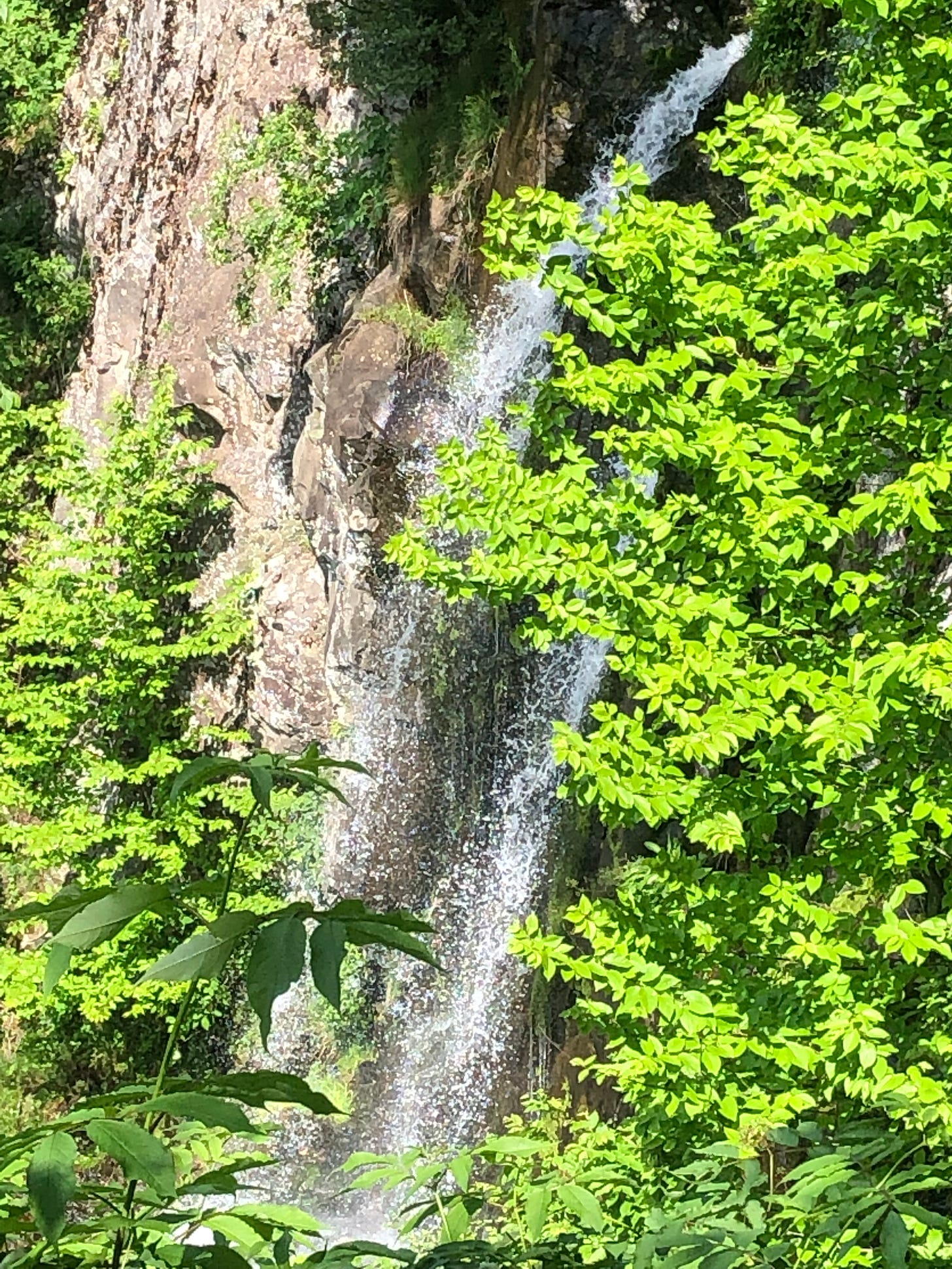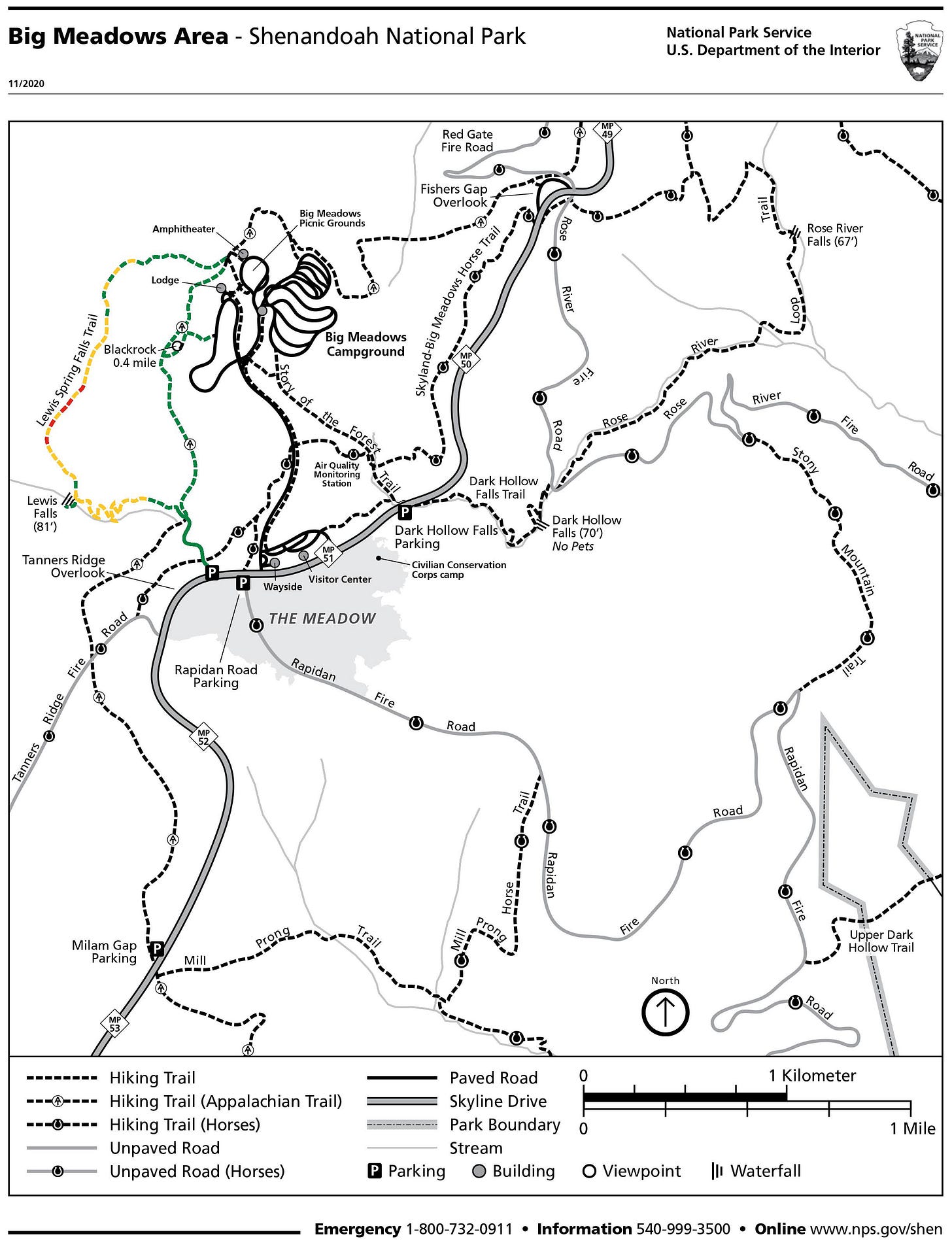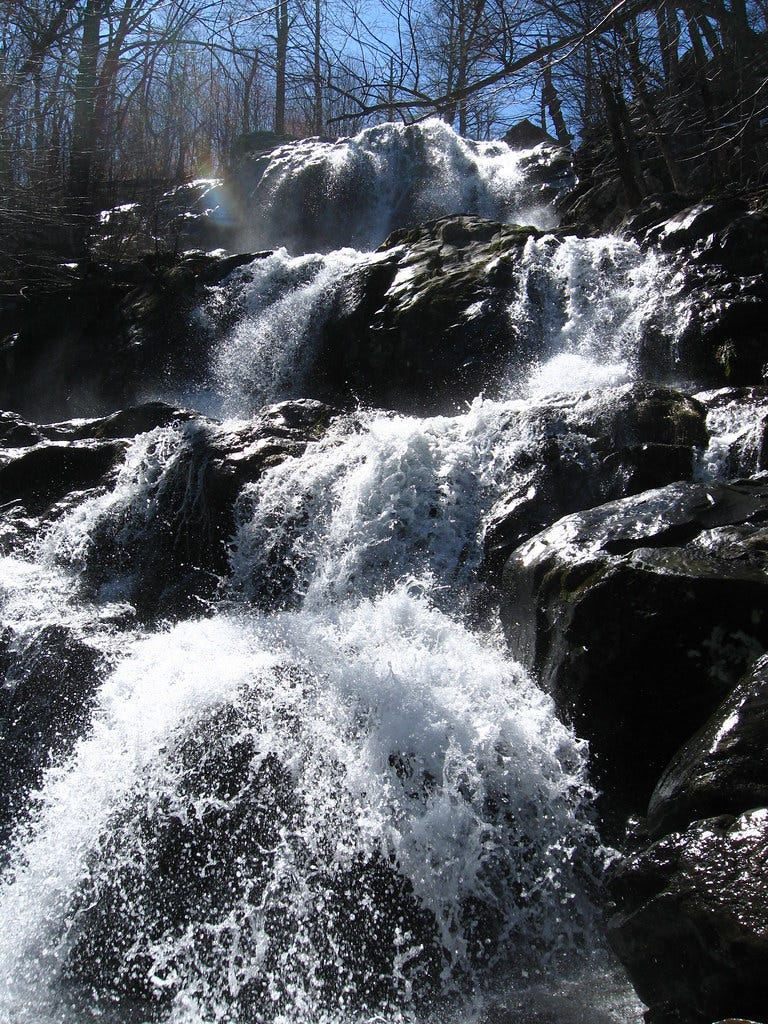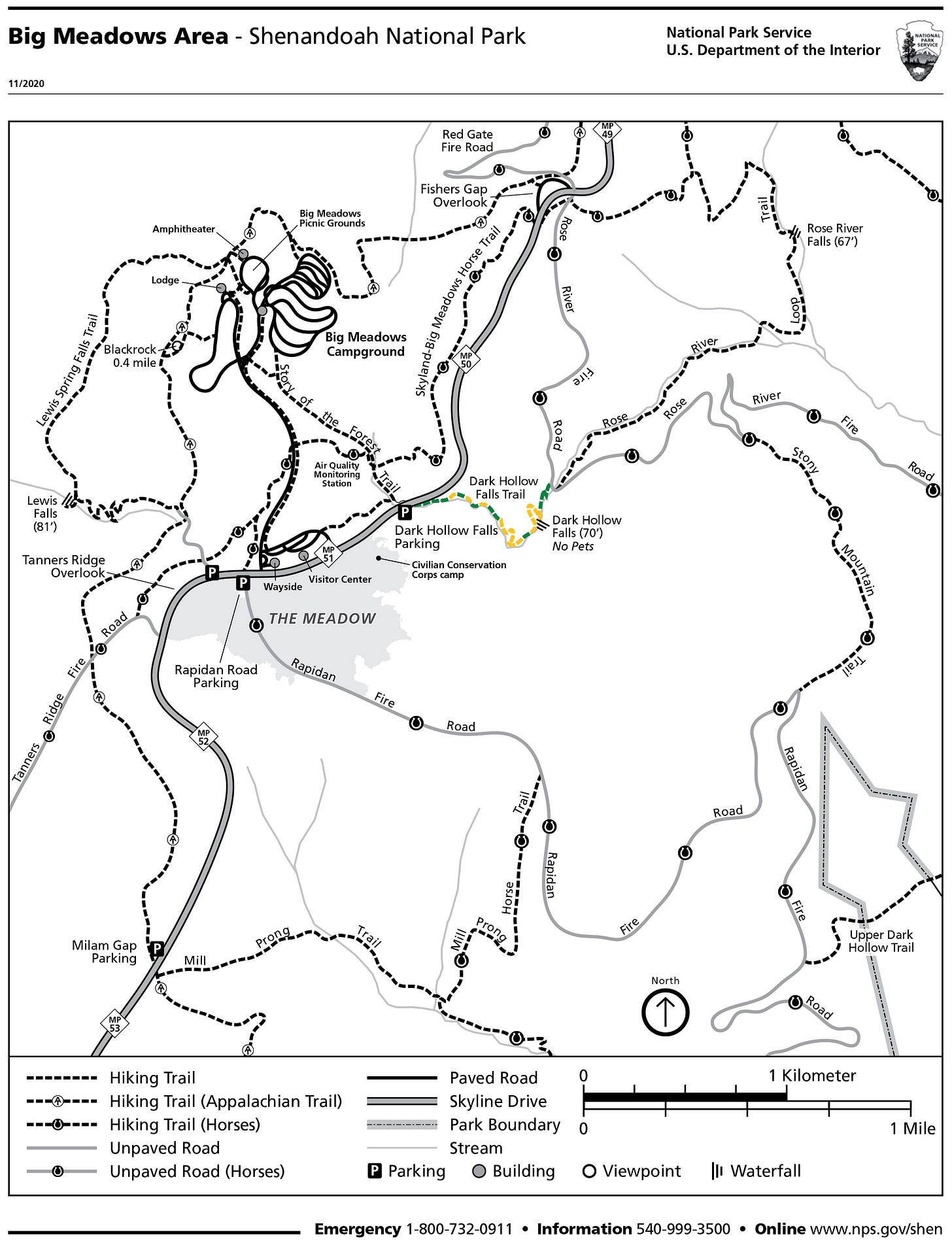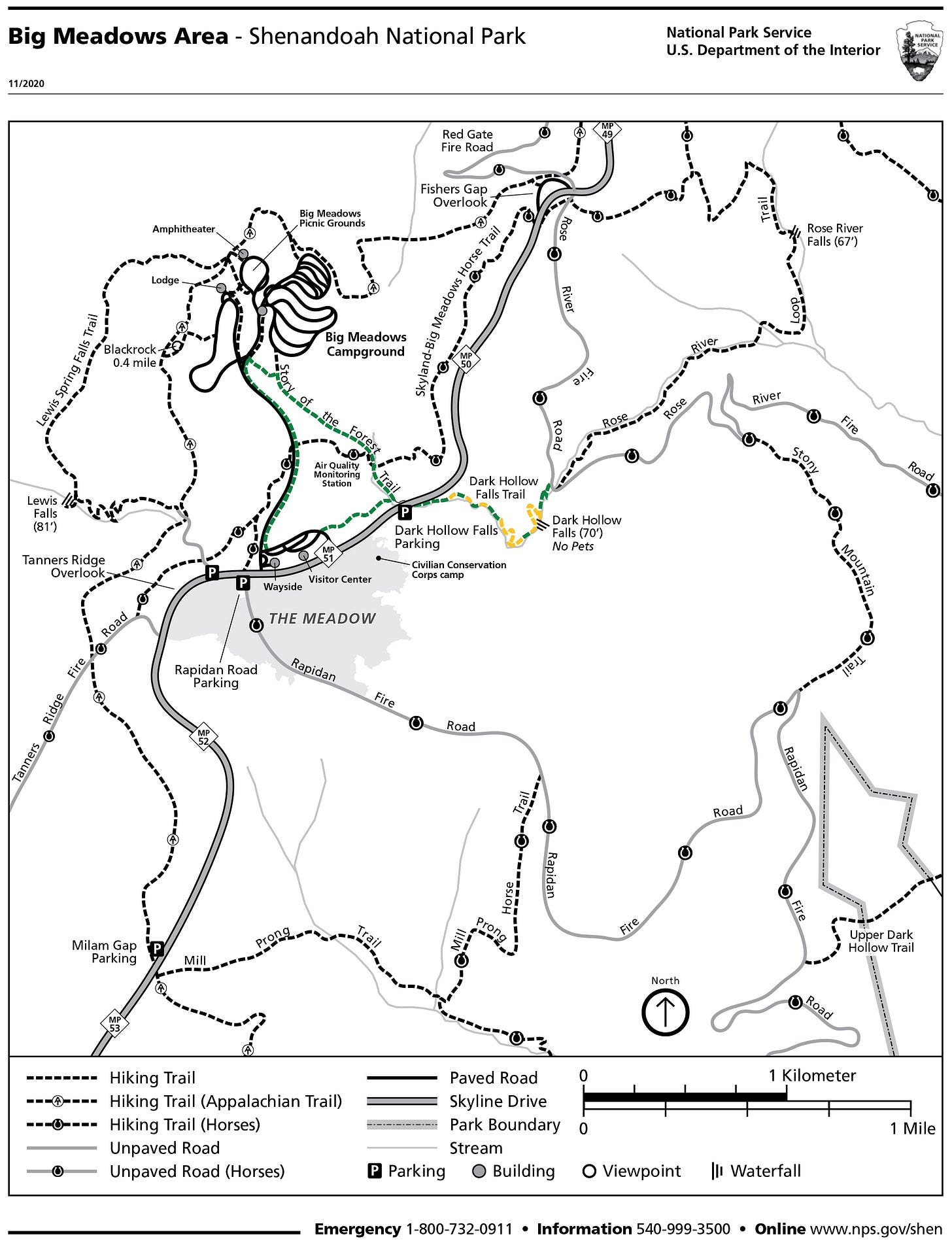Lewis Falls — a photo from an old guide.
National Great Outdoors Month will soon be upon us. June is a great time to celebrate getting out into the woods and waters. June first is National Trails Day – a celebration of everyone who hikes and maintains these wonderful pathways to all that is wild and wonderful. But really, I love the woods on a winter day, and don’t need to wait until school’s out to want a good walk in the woods. It is a fitting time to share some favorite places – some are ones I have known for over four decades. To that end I will be presenting some places that are enjoyable walks and rambles.
I’ve perhaps known the area around Big Meadows Lodge the longest. My Grandmother loved the place. It was built by Marcellus Wright in 1939 and the buildings were constructed out of the wormy chestnut that was there after the blight killed all of them. Yes, in Grandma’s day the big forests on the mountain were largely chestnut. After the blight decimated them, oak trees gradually replaced them. The Big Meadow has been open for a long time. Fire, sometimes caused by lightning, sometimes by Native Americans, kept the place rich as game habitat.
Part of the meadow is a mountaintop swamp – er wetland. The whole place is a bit of a wonderland. The deer (Odocoileus Virginianus) are practically tame. Since no one shoots at them up here, they wander the campgrounds calmly, affording visitors the opportunity to watch them browse. Children will often find a spotted fawn hidden in the brush. Leave the little one alone! Mom will be back for her baby. They are still wild creatures, operating in instincts that have served them well for a long time.
If you are extremely fortunate, you might see the largest mammal in the woods, the Black Bear (Ursus Americanus). They are incredibly shy, but they are big animals with big appetites. Once in a while, one will try to snag a picnic basket just like Yogi in the old cartoons. Mostly they avoid contact with humans. Still, old bruin has a weakness for unattended food, so don’t eat or cook in your tent. Store your food so as to make it harder for hungry bears to engage in larceny.
Here follows the first in a series of articles about some favorite places to wander.
Lewis Spring Falls
I think the first time I hiked to Lewis Falls, or Lewis Spring Falls, was in 1977. We went in the winter and the 81’ waterfall was truly impressive. I was young, and the trail seemed pretty easy. There is a viewing platform with a nice stone railing at the top of the falls. That is what is shown on the map below. In winter, you could walk to the bottom of the falls for a pretty amazing look up at them. That trail is unmarked, overgrown in summer, and most guides do not recommend it anymore.
Lewis Falls — a photo from an old guide.
The Base of Lewis Falls. — I found this photo on Pinterest. I personally have not descended to the base of the falls. There is no marked trail and I am told it can be quite dangerous.
I have fond memories of Lewis Falls. It is one of the first hikes I ever did in Shenandoah National Park, largely due to its proximity to Big Meadows Lodge. The first time I kiked it was in winter, and there was plenty of water flowing. The 81 foot tall waterfall was impressive. It had been a few years since we’d hiked it. I think we last did it in 2018. Still a pretty inspiring walk. So, after a lovely lunch at Big Meadows Lodge, we decided to walk it again.
Here’s the trailhead sign. Yes, there’s a 1000 foot descent (meaning a 1000 foot ascent on your return trip. The actual one-way distance is more like 1.8 miles (3.6 miles round trip). — Photo by Bob Kirchman
The trail begins in a lush forest. — Photo by Bob Kirchman
Ferns abound here. The trail is pretty easy. — Photo by Bob Kirchman
Golden Groundsel. — Photo by Bob Kirchman
Dog Rose. — Photo by Bob Kirchman
Mountain Laurel. — Photo by Bob Kirchman
The trail gets a bit rougher (and rockier), as you descend. — Photo by Bob Kirchman
This tree has a story. — Photo by Bob Kirchman
We set off down the trail. It was lush and lovely. Ferns were everywhere, as were spring wildflowers. It was the beginning of the resort season, so we wondered why we didn’t see more hikers. We would soon find out.
As we descended, the trail got rougher and rockier. I really didn’t remember it being so rough, but of course, I was remembering hiking it when I was younger. A few rocks were no big deal then. They still aren’t now.
We came upon a place further down, however, where a young man and his son were seriously deliberating whether or not to continue. At this point the trail was quite rocky, and was obscured by a generous covering of pine needless.
It was not so clear at that point how to continue. I knew the trail well enough to push on, but the young man and his son never made it to the falls. It would turn out that we were on the trail long enough to know this.
I went to climb up a rock further down the path, extended my leg to give myself a boost, and then I felt the pain. Somehow I pulled a muscle in the process. The rest of the hike would be painful.
Yes, there are uphill bits, even on a on a downhill climb. It was pretty rocky here. I’d give bits of it a higher difficulty rating, probably because of the part obscured by pine needles. When we reached the falls, all the the hikers we saw were — well — serious hikers.
As you can see from the photo below, the falls are now quite obscured by the growth of vegetation. To me, still worth the walk, but you’ll need to go in winter to get the full experience of Lewis Falls.
The Falls. — Photo by Bob Kirchman
A Trail Guide
Here I’ve reproduced the Park Service map of the Big Meadows area, highlighting the trails to Lewis Falls with color indicating difficulty. Green is relatively easy. Yellow is moderately difficult, and red indicates that there is a bit of a challenge.
The 3.6 mile round trip from the lodge contains all three. The Park Service rates the whole trail as ‘Moderate Difficulty.’ I think a few places are a bit rougher, but take your time. If you can hike a mile on easy trail in a half hour, allow twice as much time for the rough spots and take it easy.
The alternative route to the falls is from the parking area south of the wayside. It is considerably shorter (1.8 mile round trip) and is but a 607 foot descent. It is still moderately difficult, rough and rocky. The Appalachian Trail through Shenandoah National Park is pretty easy walking. The through hikers call it ‘Hollywood’ or ‘Hamburger Junction’ because they can eat at the waysides. It’s not the White Mountains of New Hampshire.
In the past, we’ve enjoyed walking in from the lodge and out on the trail mentioned as an alternative route; enjoying a leisurely loop back on the Appalachian Trail. The whole three mile loop is color coded on the map above as to difficulty.
As we were ascending the trail on our return trip, we came upon a young woman carrying a small child in her arms. We did advise her to “look over her shoulder” from time to time and decide whether she wanted to go back up if she went further down.
My leg was hurting from the muscle pull. We took our sweet time ascending. The woman caught up with us, having indeed decided to turn around. She did thank my wife for the advice.
In my collection of maps is an old highway atlas that says of some unimproved roads “make local inquiry.” By the time you read this, trail crews may have been at work clearing and rebuilding sections of the trail I have mentioned, and possibly trimming out some vegetation to improve the view.
The trail is described in Henry Heatwole’s Guide [click to read]. Last updated in 1997, the guide still is quite worth reading. Unfortunately the paper version is no longer in print. Still, the trail descriptions and difficulty ratings are an incredible resource for any hiker not familiar with the area. The Entire Guide [click to read] is here, available on the internet.
Still, one thing I have learned in many years of hiking is to always be prepared for a bit of the unexpected. The adventure is part of the reason I go.
Dark Hollow Falls
Dark Hollow Falls. — Photo by Bob Kirchman
If you are looking for a waterfall experience that is a relatively easy hike from Big Meadows, I recommend Dark Hollow Falls. It is just a 1.4 mile round trip from the parking area. I give it a ‘moderate difficulty’ (yellow) rating in parts because it is a bit rocky and there is a 440 foot elevation change. Still, it is quite doable for most people.
Dark Hollow Falls.
Story of the Forest
If you want a longer hike, the 1.8 mile loop of the Story of the Forest Trail is a nice walk. It is also a convenient connection trail for walking to Dark Hollow Falls from the campground.
More on Big Meadows Lodge [click to read]



